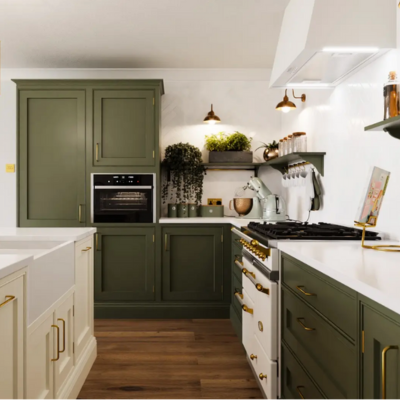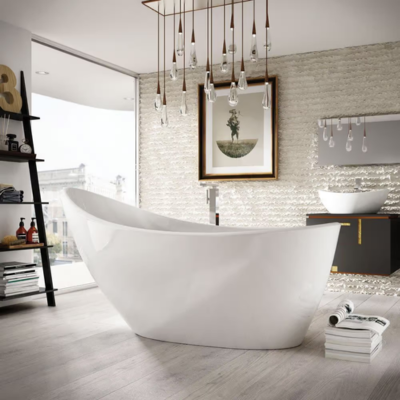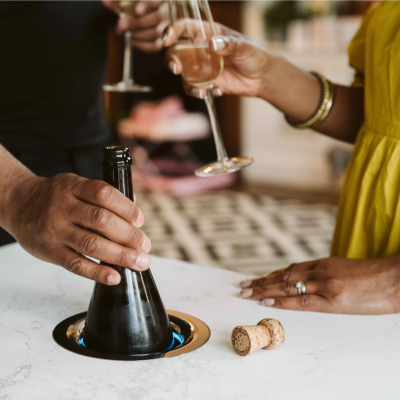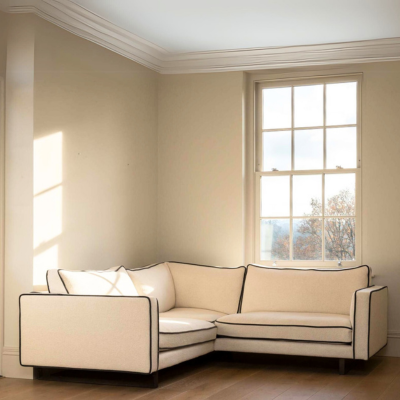Shaker kitchens are a mainstay in the interior design world.
You’ll often see top-name brands like Clive Christian, Burbridge, and Chalon promoting their takes on shaker style. You might even find modern kitchen listings labelled with phrases like ‘shaker cabinets’ and ‘shaker-style’ units, despite looking totally different.
So, what is a Shaker kitchen, and where does this universal approach to design come from? You may be surprised to learn that Shaker kitchens have existed since the mid-19th century – older than both the lightbulb and the telephone!
Put simply, they’re defined as ‘simple, practical designs made with a high-level of craftsmanship’. You can learn more about the origins of shaker kitchens right here with Rehome.
What are the origins of Shaker kitchens?
The history of Shaker kitchens is intertwined with religion. Minimalism, defined as a ‘deliberate lack of adornment or decoration’ is more than just a visual description. To a Christian sect called the Shakers, minimalism was a way of life. In 18th-century America, these religious worshippers called on members of their community to combat the Seven Deadly Sins by living a godly, egalitarian lifestyle. Fighting the sin of ‘Pride’ was particularly relevant to 19th-century Shakers.
At the height of their membership, many home interiors were inspired by elaborate Georgian and English-Renaissance influences: think lots of dramatic, ornate decoration and embellishments. The Shaker community saw these designs as overly ‘prideful’ and, to disavow the sin, created a community based on ‘honest living’.
Together, the Shakers grew their own food and crafted everything else by hand, from buildings to clothes and tools. As a group that valued self-sufficiency, they believed all creations should serve a functional purpose. But that didn’t mean Shaker designs were drab! They often used ecologically sourced materials like hardwoods (maple and cherry), and their paints were limited to reds, greens, blues, and yellows.
With a reputation for excellent craftsmanship, it’s no wonder that Shaker creations are still around today. Ladderback chairs, for example, woven with wood, and tilting kitchen chairs: all popular Shaker furniture designs. While only two members of the Shaker sect survive today, their influence on the world of kitchen design has lived on. (Fun fact: they were given the nickname, ‘Shakers’ because the community regularly performed public dances as an act of worship).


What materials are Shaker cabinets made from?
We mentioned wood before, but how exactly did the Shakers create their kitchens?
Their love of utility meant Shakers would’ve used whatever local wood was on hand! Solid, plain hardwoods, like oak, maple, birch, or chestnut, were suitable because they were naturally durable (and beautiful without needing staining or lacquer).
Shaker craftspeople valued austerity and, as such, created unadorned, unpretentious pieces that were made to handle the demands of a busy life. They were a commune, after all!
Today, you can find Shaker kitchens in all price ranges. Solid wood is still the central material, although some modern applications may be manufactured using plywood and medium-density fibreboard (MDF).
How to recognise a Shaker kitchen
Like the Shakers themselves, their designs are defined by simplicity. Straightforward, practical furniture has remained a favourite with homeowners for hundreds of years, and the ‘visually clean’ look isn’t going anywhere. Here are some ways you can identify a Shaker kitchen:
- Cabinet doors: The hallmark of Shaker design is the cabinet door, which features a flat centre panel framed by clean, straight-edged borders. The recessed door is a functional design that avoids unnecessary ornamentation (while still looking great!)
- Materials: Traditionally, Shaker kitchens use hardwoods that are often left in their natural state or finished with stains that highlight the wood's grain. They may also be painted in muted, nature-inspired colours, like whites, blues, and greens.
- Hardware: In keeping ‘minimalist’ principles, hardware such as knobs and pulls are simple, often crafted from materials like wood or metal without elaborate detailing.
- Functional layout: Shaker kitchens should be straightforward and practical for daily use.
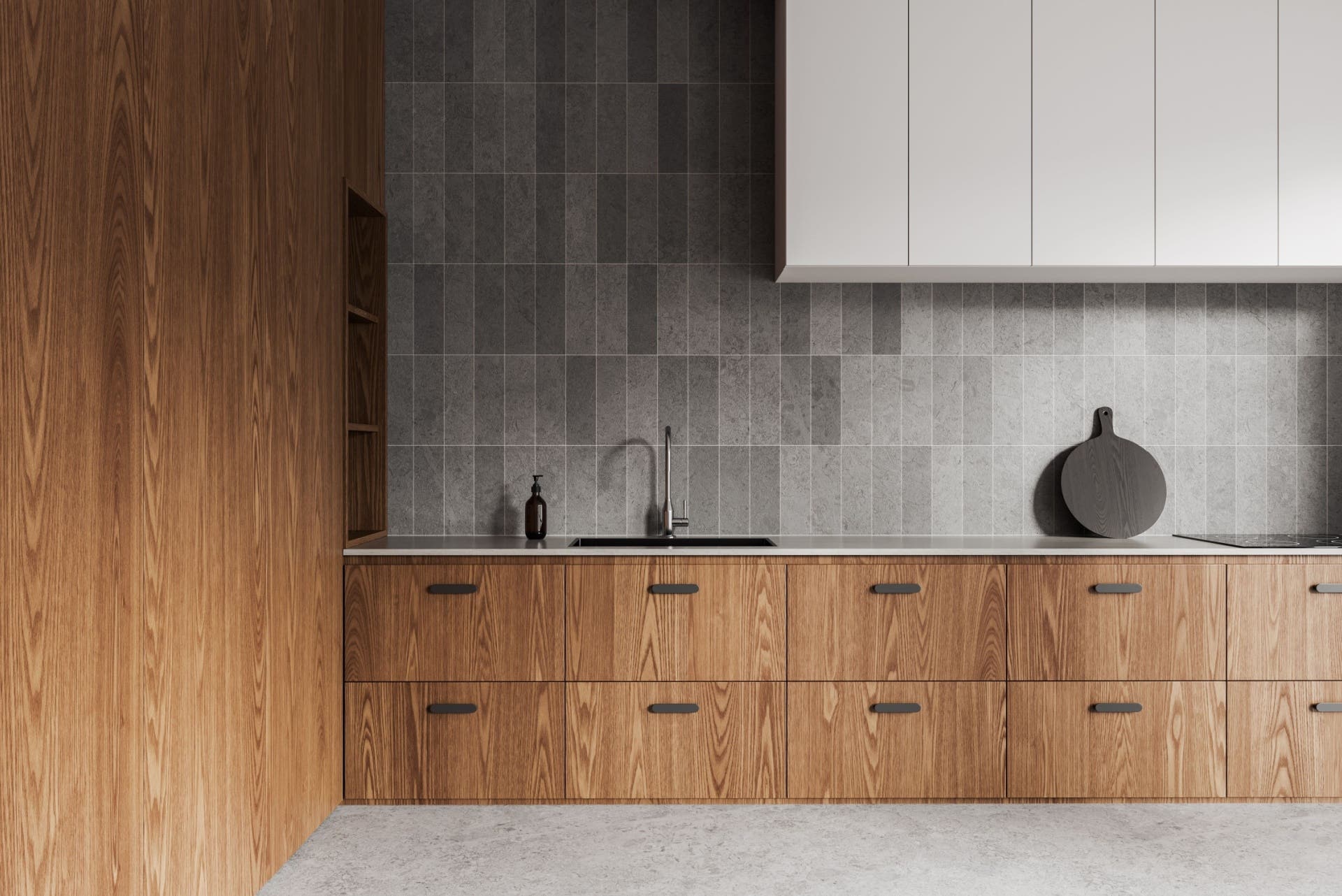

Why are Shaker kitchens so popular?
Ultimately, Shaker kitchens are so beloved because our need for functional furniture will never go away. The Shaker community’s influence has been cemented in history, and their ‘fashion-proof’ designs stand strong even in 2025.
But so, too, do their ‘simple living’ ideals. Now, more than ever, eco-conscious consumption is a priority for homeowners, and the Shakers’ use of inexpensive, natural materials has become something modern manufacturers want to mirror. Now, you can see world-renowned brands like Mereway, Sheraton, and Smallbone of Devizes echoing the principles of Shaker living.
Shop for pre-loved Shaker kitchens with Rehome!
We hope our deep dive into the history of Shaker design has made interesting reading!
If you want to see exactly how their principles have translated to modern design, browse pre-loved Shaker kitchens with Rehome. In the spirit of Shaker living, we sell ex-display and second-hand Shaker interiors on behalf of sellers. Give the in-frame stylings of a Second Nature Shaker a new home (for thousands of pounds less than high-street prices).
Or, invest in a premium Shaker pantry from John Lewis of Hungerford, completed to the highest standards of craftsmanship. You can do anything when you live in possible.
FAQs
How do modern shaker kitchens differ from traditional ones?
The core principles of Shaker kitchen design are simplicity and practicality.
While traditional Shaker kitchens typically feature natural wood finishes and subtle tones, modern interpretations may embrace a broader spectrum of colours and incorporate embellishments like plaques, carvings, or ornate hardware.
Can I incorporate a kitchen island in a shaker kitchen design?
Yes, of course! Kitchen islands are inherently practical. They expand counter space, storage and can even be purchased with a built-in sink. Be sure that you’re shopping for kitchen islands with the same clean lines and understated design as your cabinetry.
Is a Shaker kitchen old-fashioned?
In the sense that they are a long-standing design principle, sure! But they are by no means outdated. In fact, Shaker kitchens are celebrated for their timelessness. Create one in your period property or new-build home, and they’re bound to blend in.
Can I mix and match different colours in my shaker kitchen?
Of course! Homeowners can put their spin on ‘Shaker’ in many ways. Why not pair light-coloured upper cabinets with darker lower cabinets, or add an island in a complementary shade?
